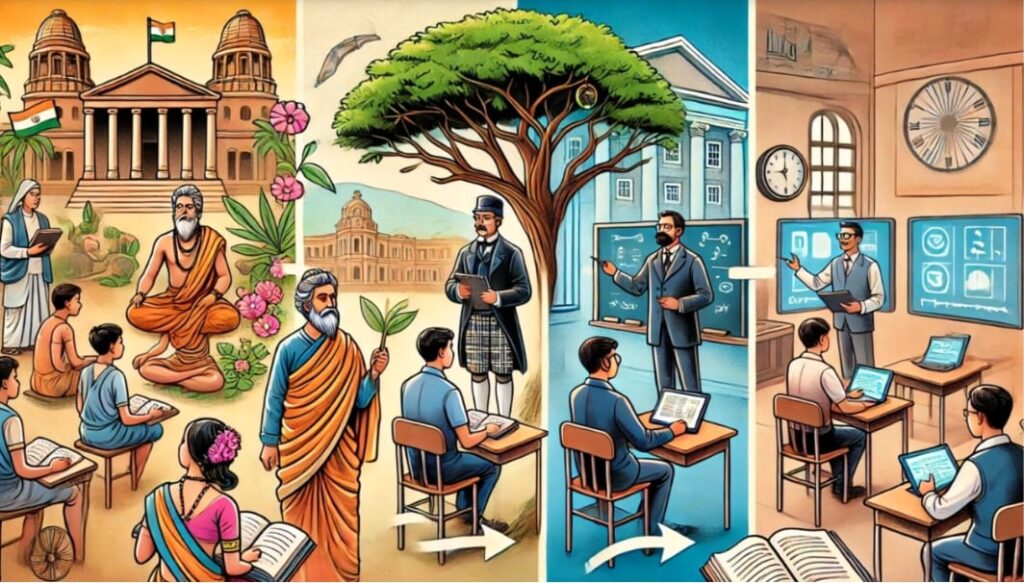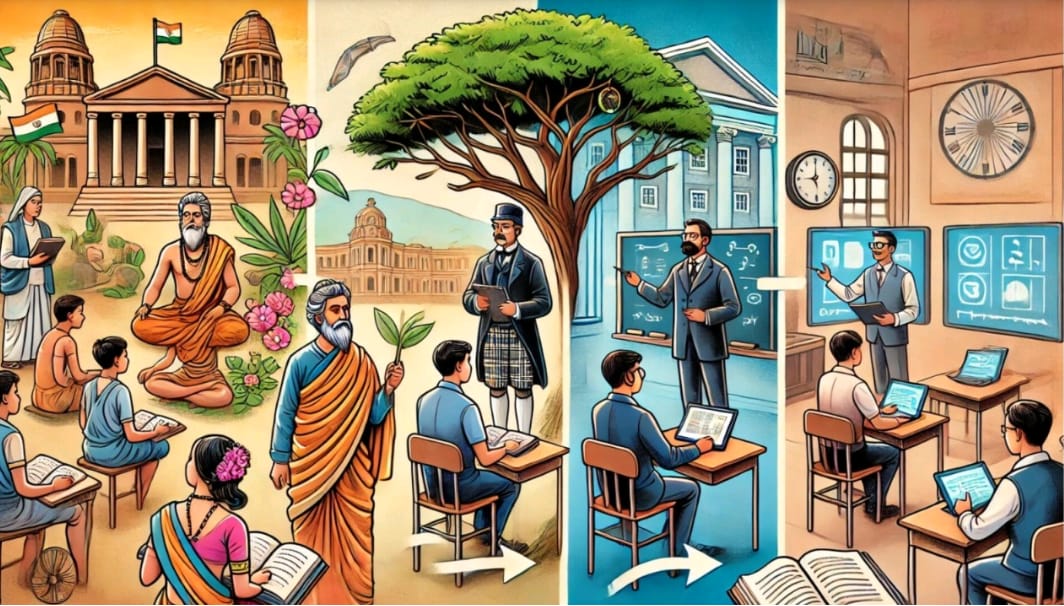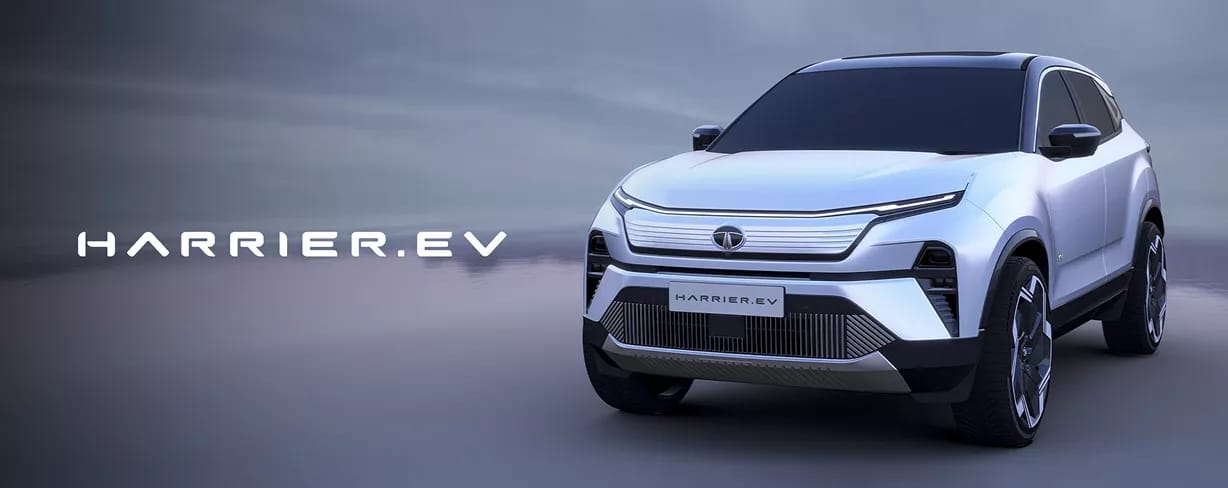Introduction - Modern Education System in India
- The modern education system in India is changing how students learn and grow. It’s no longer just about sitting in a classroom or reading textbooks — it’s much more than that. It’s the key that opens up a world full of opportunities and possibilities. Sure, most of us get our education through schools and teachers, but learning doesn’t stop there. From the moment we’re born, we start learning — sometimes without even realizing it. Whether it’s picking up a new skill, understanding right from wrong, or exploring something new, education is all about growing, discovering, and constantly improving ourselves. It’s not just about facts and figures — it’s about shaping our mindset, values, and the way we see the world.
- Education in India has gone through a huge transformation in recent years. From chalkboards and classroom lectures to smartboards and digital platforms, the modern education system in India is shifting the way students learn — and it’s a positive change. This new system focuses more on real-world skills, flexible learning, and practical knowledge instead of just textbook memorization.
- There are plenty of benefits in the modern education system in India — including personalized learning experiences, access to global resources, and inclusive education for all, even in remote areas. But at the same time, challenges like the digital divide, lack of proper teacher training, and outdated assessment methods still exist and need serious attention.
- Still, this ongoing shift is a step in the right direction. In simple words, the modern education system in India is not just about scoring high marks — it’s about preparing students for life, helping them become confident, skilled, and ready for the future.
- Let’s fix the roadblocks, bridge the gaps, and make quality education accessible to all. And as we move forward, let’s also pray for a brighter, smarter, and more empowered future for every student in India.

What is the Modern Education System?
- The modern education system is a new and updated way of learning that focuses more on skills, creativity and real-life understanding rather than just memorizing textbooks. It uses technology, digital tools and smart techniques to make education more interesting, personalised and meaningful.
- Unlike the old system where the teacher did all the talking and the students just listened and wrote notes, today’s system encourages two-way learning. Students are now more involved – they ask questions, understand topics in-depth and learn through activities rather than just lectures.
- In modern classrooms, you will find smartboards replacing blackboards and students using tablets or laptops to access online content. Apps and platforms like Zoom, Google Meet and online learning websites have made it easier for students to learn from anywhere, anytime.
- Another big change is the focus on skill-based education. Schools now teach things like coding, communication, problem-solving and critical thinking – skills needed in the real world. Also, the modern system is more inclusive, meaning that even students from remote areas or with different learning needs can now access quality education through online resources.

Shift from traditional to modern: What has changed?
- The way of learning in India has changed a lot in the last few years. The old style of just memorizing textbooks and listening to long lectures is slowly being replaced by a more interactive and modern approach.
- One of the biggest changes is the use of technology in classrooms. Students now learn through e-learning platforms, smartboards, and even AI-based tutors who can guide them based on their learning pace. Online classes and digital tools have made education more flexible and easy to access from anywhere.
- Thanks to NEP 2020, the curriculum is being updated to include more skill-based and practical topics. There has been a major shift in focus – from memorizing answers to learning to think creatively, work in teams, and solve problems.
- Even teaching styles are evolving. Instead of just one-way lectures, schools are using flipped classrooms (where students first study the topic and then discuss it in class), blended learning (a mix of online and offline) and project-based learning where students actually learn by doing things.

21st-Century Skills in the Modern Education System in India
- The world is moving fast, and today’s students need more than just good marks to succeed. That’s where 21st-century skills come in. These are the important skills that help students face real-world challenges — like digital literacy, communication, teamwork, critical thinking, problem-solving, and even emotional intelligence.
- Indian schools are now starting to understand this. That’s why many of them are introducing things like coding classes, life skills sessions, personality development, and group activities. Students are being taught how to think independently, handle emotions, express ideas clearly, and work better with others — which are all super useful in life and career.
- The government is also stepping in to support this change. Through programs like Atal Tinkering Labs, students in many schools now get access to tools for innovation, robotics, and hands-on experiments. Even private platforms like Physics Wallah (PW) and others are helping students go beyond textbook learning and focus on concept clarity, real-life problem-solving, and modern skills.

Advantages of the Modern Education System
- One of the biggest plus points of the modern education system is that it gives students the freedom to learn at their own pace. Not every student learns the same way — some are fast, others need more time — and today’s system understands that. With the help of online classes, recorded videos, and learning apps, students can now study when and how they’re comfortable.
- Another great advantage is the access to global knowledge. Students sitting in small towns of India can now learn from top teachers, watch international tutorials, and explore different subjects from anywhere in the world — all thanks to the internet.
- Modern education also focuses more on practical and life-based learning, not just theory. Students learn how to apply what they study in real-life situations — whether it’s managing money, working in teams, or solving real problems.
- And let’s not forget how inclusive education has become. Earlier, students in remote villages had very limited access to good education. But now, with smartphones, online platforms, and digital tools, quality learning has reached even the most distant parts of India.

Disadvantages of the Modern Education System
- While the modern education system has many benefits, it’s not perfect. One of the biggest concerns is the over-dependence on technology. Students are spending a lot of time on screens — laptops, tablets, and phones — which can lead to eye strain, health issues, and a lack of physical activity.
- Another issue is that real-life social interaction is going down. In traditional classrooms, students made friends, played together, and learned important social skills. But now, with online learning, many kids feel isolated and miss out on that face-to-face bonding.
- There’s also the digital divide — not every student in India has access to high-speed internet or expensive gadgets. While urban students may enjoy smart classes and online resources, many students in rural areas still struggle with basic connectivity, which creates an unfair gap.
- Lastly, not all teachers are fully trained to handle modern tools and teaching methods. Without proper guidance, even the best technology can fall short. Some teachers still follow old ways, which makes it harder for students to get the full benefit of modern learning.

Challenges of Modern Education in India
- Even though modern education is growing fast in India, there are still quite a few challenges that need attention.
- One major issue is unequal access to technology and the internet. Not every student has a smartphone, tablet, or reliable internet connection at home — especially in villages and remote areas. This creates a big gap between students who can take advantage of online learning and those who can’t.
- Another big challenge is the lack of proper training for teachers. Many teachers are still getting used to digital tools and new teaching styles. Without the right support and training, it’s tough for them to fully adapt to the modern system and guide students the way they should.
- The curriculum and exam patterns are also struggling to keep up. While the world is moving towards skill-based and practical learning, many schools still follow old methods of testing based only on memorization. This makes it hard to measure real understanding and creativity.
- Also, language and cultural barriers in many ed-tech platforms make it harder for students from different regions to relate to the content. If online lessons are mostly in English or Hindi, what about kids who are more comfortable in their regional languages?

Future of Modern Education in India: What Lies Ahead?
- The future of education in India is looking really exciting and full of possibilities. With new technologies like AI (Artificial Intelligence), VR/AR (Virtual and Augmented Reality), and gamified learning, the way students learn is going to be a lot more fun, interactive, and personalized.
- We’re also moving towards a hybrid model of education, where students will learn both online and offline. This flexible system will let students choose what works best for them — whether it’s attending a physical class, learning from home, or doing both together.
- Another big change is the rise of a lifelong learning mindset. In the future, education won’t stop after school or college. People will keep learning new skills throughout their life to stay updated and grow in their careers — whether it’s learning a new language, picking up coding, or improving communication skills.
- The NEP 2020 (National Education Policy) is also expected to play a major role in transforming the education system. It encourages more skill-based learning, flexible subject choices, coding from an early age, and even a focus on regional languages. It’s a clear step toward a more student-friendly and future-ready system.

Conclusion: A Smarter Path Ahead for Indian Education
- Education in India has gone through a big transformation. From the old blackboard-and-chalk style to modern digital classrooms, the way we learn has changed — and for the better. Today’s system is more focused on skills, flexibility, and real-world learning than just memorizing facts for exams.
- There are many positives — personalized learning, global access, practical knowledge, and inclusivity. At the same time, we can’t ignore the challenges like unequal access to technology, lack of proper teacher training, and gaps in curriculum. These issues still need serious attention.
- But overall, this shift is a big step forward. In simple words, modern education is not just about getting marks — it’s about preparing students to think, adapt, and grow in real life. It’s about making learning smarter, more meaningful, and useful for the future.
- If we can fix the roadblocks and make education accessible to every student — no matter where they live — we’ll be moving towards a brighter, stronger, and smarter India.





I love this blog. I don’t know what I’d do without you and your great info! Thank you so much!
Thank You
This website present india good information